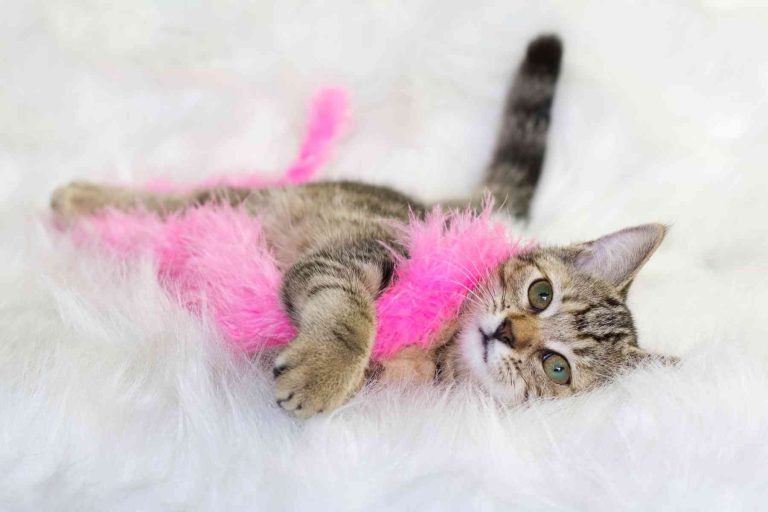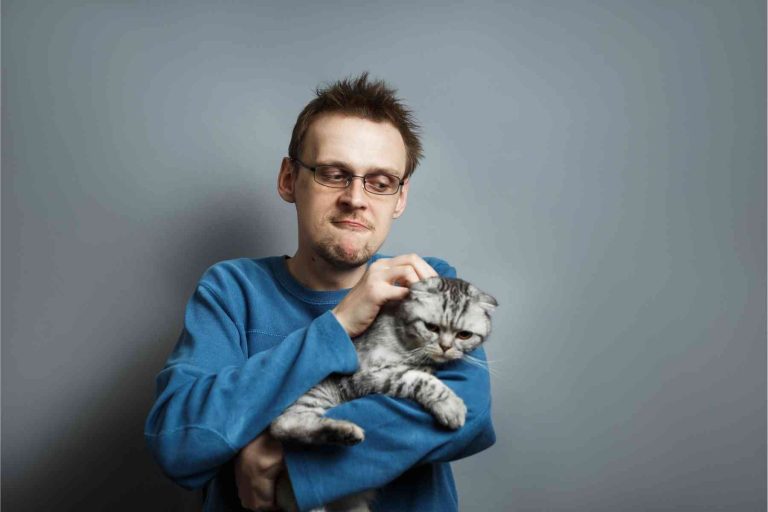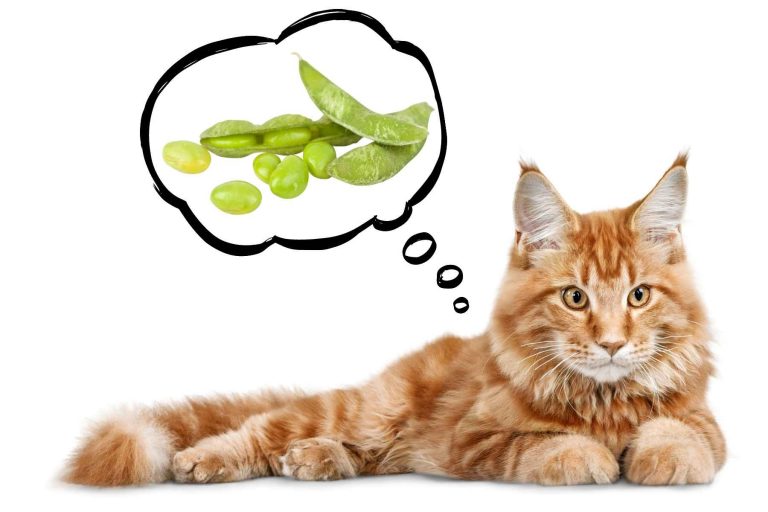Can Cats Cry Tears?

When you feel overcome with emotions or pain, the chances are that you start crying. And since your cat is always there for you, you may wonder if they can bawl their eyes out too.
Cats make sounds resembling crying but don’t shed tears in response to pain or sadness. However, your feline can express sorrow in other ways, such as not eating or acting unusually despondent. If your cat’s eyes look teary, it’s most likely due to a medical condition or allergies.
Next, this article delves into the surprising reasons why your cat might shed a tear. Along the way, it also explains how to keep your feline friend out of a crying mood.
Reasons Why Your Cat Cries
Your cat will never cry their eyes out because they’re feeling down. However, other things may cause them to tear up.
Here are the main reasons why your cat’s eyes get watery:
- Conjunctivitis: Conjunctivitis is the most common eye disorder among felines. It causes teariness in their eyes, among other things.
- Foreign object: Have you ever started tearing up after getting something caught in your eye? Well, the same thing can happen to your pet. So if your cat cries, make sure there’s nothing in their eyes.
- Allergies: Believe it or not, our furry friends can develop allergies just like humans do. Cats are most likely to be allergic to fleas, pollen, and ingredients in their food.
- Genetics: Certain cat breeds regularly suffer from entropion, a medical condition causing their eyelids to turn inwards. As a result of the irritation, they may appear to cry. Short-nosed felines, such as Persians, are most susceptible.
- Infection: Several diseases can cause your cat to get teary-eyed. As a result, seek out a vet if your pet’s teariness worsens over time or reoccurs.
Is It Normal for Cats To Cry?
Crying tears is not something that healthy cats typically do. If your cat does it, that generally means that they’re suffering from a medical problem. Or that something is stuck in their eye.
Some cat breeds are likely to get entropion, which causes watery eyes. But despite being a common occurrence, you should never let this condition go untreated.
However, there is an important caveat.
While it’s unusual for felines to shed tears, it’s normal for them to cry out vocally—especially with whiny meows. And although these cries sound pitiful, they aren’t necessarily a cause for concern.
Generally, cats whine to get their owners to notice them. Sometimes, it’s due to being in distress or needing help. But most of the time, it’s just because they’re hungry or want some pets.
So when your cat cries just for attention, think carefully about how you react. Immediately giving them treats and head scratches may reinforce the behavior.
Can Cats Feel Sad?
Cats can feel various emotions, such as sadness, just like their human owners do.
It might be hard to believe at first. After all, domestic felines have an unfair reputation for being aloof. But as it turns out, the view that they lack feelings is entirely wrong. It’s just that their ways of expressing themselves are much more subtle.
While you might bawl your eyes out when you’re sad, your cat is more likely to act lethargic. They may stop showing interest in playing. Or spend their entire day asleep.
Furthermore, cats are capable of feeling different kinds of sorrow.
For example, felines will often grieve after losing their owners by refusing food and hiding. And many people have even reported their furry friends mourning the passing of other pets.
Illness can also make your kitty seem depressed by causing them discomfort and pain. Some felines might even lash out if their injury makes them feel vulnerable.
Reasons Why Cats Get Sad
Cats can both feel sad and cry. However, those two things are rarely related.
Usually, crying tears is something cats do only in response to a health issue. In contrast, there are a surprisingly wide variety of reasons your feline may get depressed.
Below are the most common sources of sadness for cats:
- Separation anxiety: Even though they act independent, most kitties love their owners deeply. As a result, your pet may temporarily get depressed when you’re not around.
- Grief: Cats can mourn the loss of people and animals that they love. While grieving, they’ll generally seem listless and distant.
- Stressful environment: Do you live in a noisy neighborhood? Are there a lot of other pets in your home? If so, these kinds of things can generate stress in your feline.
- Illness and injury: Severe health issues may cause your cat to act sorrowful. If you can’t find a cause for your pet’s sadness, schedule a visit to the vet.
- Lack of enrichment: Like humans, cats can get bored. And when they have no outlet, that pent-up energy often morphs into depression.
How Do Cats Show Sadness?
Even though they won’t shed tears, your cat can show their sorrow in other ways.
Below are some signs that your kitty might be feeling under the weather:
- Lack of grooming: A healthy, content cat will generally spend a lot of time grooming itself. So if your furry pal looks unkempt, that’s a sign that something is wrong.
- Loss of appetite: Your cat might stop eating if they feel depressed. However, it can also be a sign of injury or sickness.
- Demeanor: Your pet’s body language can say a lot about their mood. Some signs of dismay include a tucked tail, raised hair, and laid-back ears.
- Disinterest: Is your usually bubbly pet suddenly not interested in playing? If so, that’s a strong indication that something is bothering them.
- Aggression: Often, a feline’s sorrow will manifest in aggressive outbursts. So try to resist any impulse to scold your cat if they lash out at you. Otherwise, you may stress them out further.
Your feline’s behavior may be challenging to decipher at first. But the more you understand it, the better you can care for your pet.
How To Help Your Cat Feel Happier
After reading about how cats can feel sad, you may feel the urge to brighten up your feline’s day. And thankfully, there are plenty of ways to do just that.
Here is how to keep your pet happy:
- Enrichment: Stimulation is crucial for a cat’s well-being. When you’re free, spend time playing with your furry pal. Getting them a cat tree and toys can also help prevent boredom.
- Get them a friend: Despite their reputation for being solitary, cats are social creatures. If your pet craves attention, they may be happier with a feline friend.
- Take them for walks: Believe it or not, many cats love going out on a leash! Walks are especially great if you live somewhere that you can’t easily let your cat out.
- Vantage points: Cats naturally prefer the high ground. They especially love cat trees and platforms that have a view outside. As a result, providing elevated vantage points around the house can help your pet feel confident.
- Clean litter box: Try to keep your kitty’s litter box as clean and fresh as possible. If it gets too dirty, your cat may feel anxious and sad.
- Catnip: There are few things that felines love more than catnip. Giving some to your pet (in moderation) is an excellent way to boost their mood.
What To Do If Your Cat Cries at Night
Cat owners know that their felines can get rambunctious at night. And if they start crying too, it may feel impossible for you to get any sleep.
Thankfully, you can’t take some steps to discourage your pet from yowling.
Firstly, it’s critical to identify the cause of your pet’s crying before changing the behavior. After all, you want to make sure your kitty is okay. Plus, your cat might be trying to alert you to something.
But assuming there’s no medical problem, your pet is likely just yowling for attention. And in that case, you mustn’t give them any—otherwise, they’ll cry even more.
Instead, consider locking your pet out of your room at night. The yowls may persist for a while but should die down if you don’t reward the behavior. Also, ensure your pet has access to cat trees and toys when you’re not around. That way, they’re less likely to whine out of boredom.
And remember: never punish the crying. All that will do is cause stress and confusion for your pet.
Other Ways Cats Show Emotion
Your cat is very unlikely to cry out of sadness. But that doesn’t mean they can’t show other emotions. Cats are surprisingly expressive once you understand their body language.
Here are some examples:
- Puffed tail: A bristled tail suggests that your cat feels threatened or angry.
- Showing their belly: If your cat lies on its side or back near you, that indicates contentment and relaxation.
- Standing on two legs: Felines love to stand up when they feel playful.
- Question mark tail: A tail curved like a question mark suggests that your cat feels social and confident.
- Kneading: Gentle kneading is a way for cats to show great comfort and pleasure.
- Chattering: Cats do this when something they want to hunt is out of reach, such as a bird.
- Tail rapidly swishing: When your feline friend feels irritated, they may aggressively sway their tail.
Final Thoughts
Cats can tear up due to eye conditions and allergic reactions. However, your feline friend won’t cry because they feel sad.
That being said, your pet may show sorrow in other ways—such as not eating or acting lethargic.






